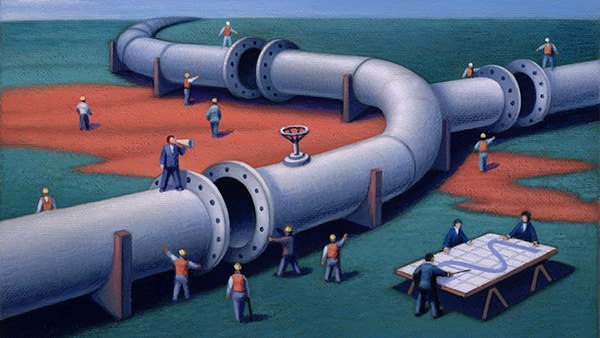 One of the great things I get to do every week is analyze major donor data from many different organizations. Over the years Richard and I have reviewed hundreds of non-profits’ data. The data reveals how their major gift programs are performing, what the potential is, and where there is opportunity.
One of the great things I get to do every week is analyze major donor data from many different organizations. Over the years Richard and I have reviewed hundreds of non-profits’ data. The data reveals how their major gift programs are performing, what the potential is, and where there is opportunity.
Here’s what I’ve learned over the years: whatever the organization values in fundraising, that’s what the organization produces. In other words, if they are spending a majority of their time, energy and resources on new donor acquisition, then you see thousands (if not hundreds of thousands) of lower-value donors in their file that don’t make it up the donor pipeline into major gifts.
If they spend money and strategy on building a monthly sustainer program, you see thousands of monthly pledgers that are giving the same year after year after year – but those donors rarely upgrade.
If an organization puts their time and energy into events, I see an influx of cash, but not many donors that give beyond one gift.
Unfortunately, Richard and I don’t see many donor files that have invested generously in mid-level and major gifts. This is why we see most mid-level and major gift programs struggling. We see:
- Donor retention rates at 60% – Retention rates should be at 80-85% in a mid-level program, and 90-95% in a well-managed major gift portfolio.
- Clogged pipelines into major gifts — Non-profits have done really well at cultivating lower-end donors, but they struggle to know what to do with the $500-$4,999 donors. So they treat them like a lower-end donor. Then they wonder why donors are not moving into major gifts!
- Major donors giving the same amount every year — Hey, it’s great that they are giving, but most non-profits are just settling for that. These donors want to give more, but no one is challenging them to do it; instead, the organization is just waiting for that $5,000 check that comes every December 31st.
- Value attrition at 45-65% – There are good donors who give one time, and then no one follows up with them or tells them how their gift made a difference. So, what happens? They go somewhere else. Hundreds of thousands to millions of dollars are lost each year by non-profits who don’t treat their major donors well.
- Development directors who lament they don’t have enough major donors and send their MGOs to look for prospects who have never given to an organization, yet they have hundreds (sometimes thousands) of mid-level donors churning in their files.
- Individual major gift portfolios that are producing an ROI of 2:1 or 3:1 in established major gift programs — This is not sustainable, yet we see many non-profits who have such low-value caseloads it’s producing less ROI than a direct-response program would.
You know, I could go on an on. But I think you get the picture. Non-profits are NOT investing properly in mid and major gifts. The result of that is poor major gift performance.
Here is where there is hope. Whenever we see a non-profit “wake up” and finally decide to focus their time, energy and resources on mid and major gifts, in 18-24 months we start to see revenue really climb. The pipeline to major gifts starts to unclog, and in 3-4 years it becomes a net revenue machine.
The question is, does your non-profit have the courage to invest in your mid and major donors? It will take time, money and patience. But if you hang in there, the results for your organization will be tremendous.
Take a look at your entire development program. What do you value? Then ask yourself if you have the right focus. If not, change it. Invest in your best donors. They will reward you.
Your fundraising program reaps what it sows.
Jeff
PS – To learn more about how to start working differently with mid-level donors, click here to download our free White Paper, “Cultivating Mid-Level Donors for Maximum Results.”







0 Comments